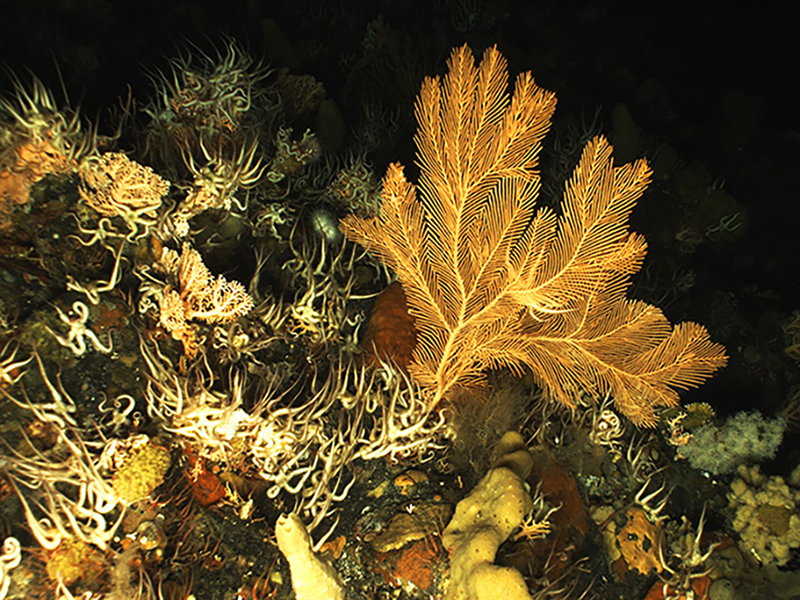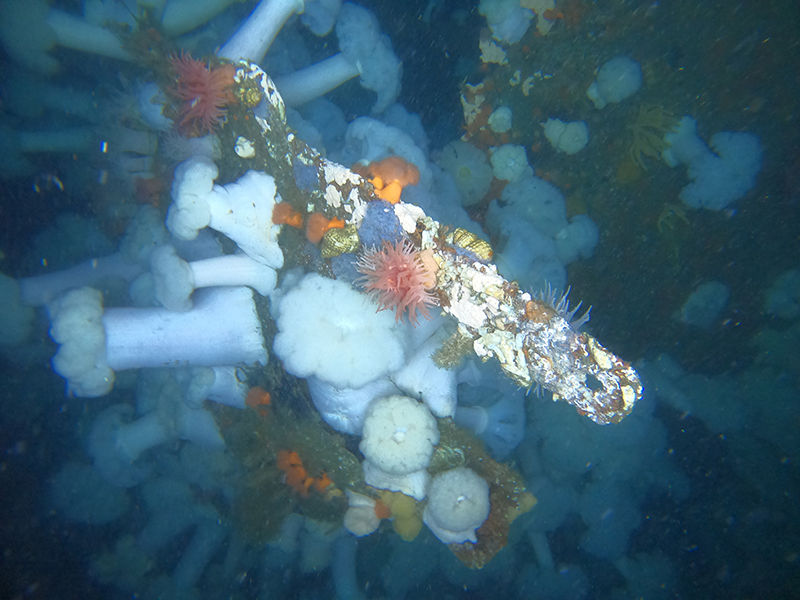Exploring Attu’s Underwater Battlefield and Offshore Environment
Wreck Ecology in the Aleutians
In the offshore environment of the Aleutian Islands, where there can often be a paucity of hard bottom substrate for settling larvae, shipwrecks often become areas of high biological diversity. The artificial substrate these shipwrecks provide can be home to many species of fish and mobile fauna, but also to deep-sea or cold-water corals.
These corals are often ecosystem engineers, creating large structures that give complexity to the underlying habitat and altering both the sediment characteristics and the local hydrodynamics of an area. By creating complex 3D structures, these corals can increase the regional biodiversity, harboring thousands of associated invertebrates and vertebrates, making them important feeding and nursery grounds for many commercial fisheries species as well as providing other vital ecosystem services. Though ecological knowledge is poor for most species, the general life history characteristics of deep-sea corals and sponges make their populations particularly susceptible to damage from anthropogenic impacts. Recovery potential from these impacts is predicted to be decades to centuries and potentially not even possible. As such these invertebrates are often classified as Vulnerable Marine Ecosystems (VME).


The Aleutian Island chain has widespread distributions and some of the greatest biodiversity of cold/deep-water corals and sponges in the Pacific. Beyond biogeographical information, ecological studies on most species of cold/deep-water corals in this area are sparse or non-existent. Difficult collection conditions combined with their prevalence on hard-bottom areas which are difficult to sample without specialized equipment means that samples are often scant and localized to highly visited areas. Finding technological solutions to examine the biogeography of deep/cold-water corals in this region was one of the goals of this project. With the advancement of marine science technology over the years, the search for cold/deep sea coral habitats has been done in different ways. Though “low and slow” approaches, such as remotely operated vehicles (ROVs) and towed camera sleds have dominated the search for coral communities, there has been an ever-increasing need for “high and fast” techniques that can explore larger areas of the seafloor rapidly. These deep coral areas have been studied via acoustic techniques for more than a decade but more recently some researchers have used synthetic aperture sonar (SAS) to identify cold coral assemblages. Utilizing SAS surveys in the Aleutian region will enable the collection of detailed bathymetric seafloor data, which may be incorporated into predictive coral distribution models. Furthermore, identifying underwater archaeological sites and other substrates with sonar will allow the team to subsequently ground-truth the areas using an ROV equipped with photographic capabilities. This provides an opportunity to assess which corals and sponges utilize shipwrecks as artificial reefs, to test the feasibility of this system in the search for new VME ecosystems, and to investigate whether corals can be identified using this system.
By Rhian Waller, Ph.D.
Published October 10, 2024